DJ Koze: Behind the Magic
Stefan Kozalla is one of electronic music’s most intriguing figures. Over the course of a 25-year […]
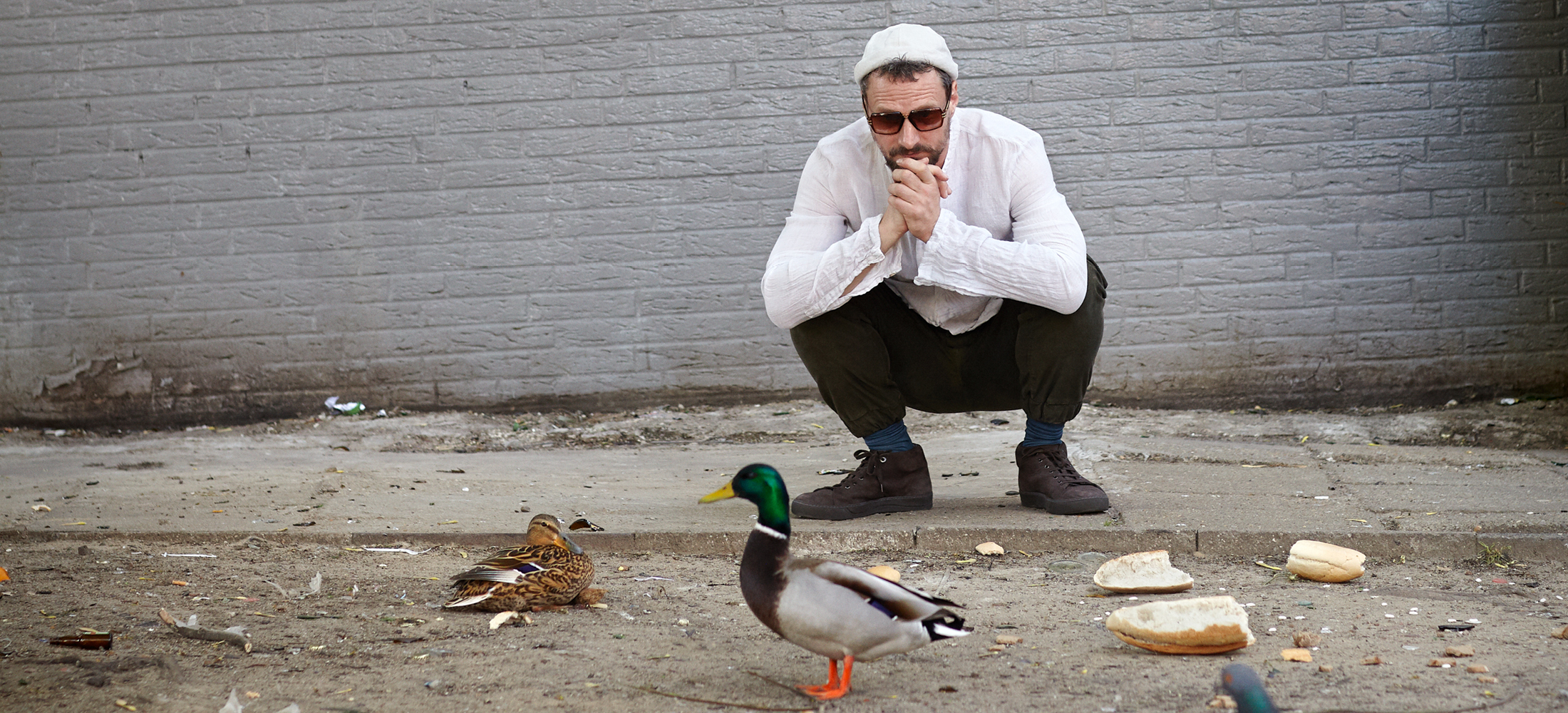
DJ Koze: Behind the Magic
Stefan Kozalla is one of electronic music’s most intriguing figures. Over the course of a 25-year […]
Stefan Kozalla is one of electronic music’s most intriguing figures. Over the course of a 25-year career, the German artist has released abstract hip-hop, sample-laden funk, wonky minimal techno, funky pop, always with a bewitching originality that is becoming increasingly uncommon. What sort of mind produces music like that? William Ralston ventured to Hamburg to find out.
The phone rings. It’s late, around midnight local time. “Hello,” says the caller, weary and a little flustered. “Hi, it’s Kosi. I’m nervous about tomorrow and I am not sure if we should do it.” My bags are packed and the taxi is booked, but perhaps I should have foreseen this hurdle: over the course of an engrossing 25-year musical career, Koze has kept media engagements to an absolute minimum. It really is remarkable just how little meaningful information you can find on him or his work. He says on more than one occasion that he got his start when his parents deserted him in a Marrakesh forest armed with only an AKAI MPC sampler, and at times it’s hard to determine the statement’s truth. “Just write that story,” he pleads. “I’ll pay you!” But after some light-hearted conversation and gentle persuasion, he agrees to meet the next day, granting unprecedented access to one of contemporary electronic music’s most brilliant and colorful minds.
This will not be the only piece you see on Koze over the coming weeks. The release of Knock Knock, Koze’s first long-player in over five years, has forced him to embrace the discomfort of the media spotlight more so than ever before. He reveals an inherent dislike for all that it represents and stresses a growing frustration at interviewers for posing the same ill-informed questions. It’s a statement doused with humor but there’s no doubting its sincerity. His only comfort, he explains, is knowing that our time together is one of his final pre-album obligations, albeit the most demanding. “I’ve never given an interviewer this much time,” he says, adding that he intends now to “disappear” for another five years. He deflects my attempts to extract more personal details with a gentle humor and sarcasm and is reluctant to offer any insight into how he became who he is. But every person has a story, and this is DJ Koze’s.

Koze, born Stefan Kozalla, was born in 1972 in Flensburg, northern Germany. He refuses to divulge anything on his childhood, but let’s slip that his father was an attorney who wished for his son to follow suit. He describes these years as “personal” and “irrelevant” in that they bear little reflection on the music he makes now. “I’m sorry if this is impolite, but you don’t have to ask these questions,” he says. An interest in hip-hop blossomed through his adolescence, sparked by US Rap from the late ‘80s, in particular Public Enemy, A Tribe Called Quest, and The Pharcyde, which, in turn, gave him an identity and connected him with a handful of young, similarly inclined teens. “Hip-hop was a fascinating force of energy that changed my life,” he explains. “The view on things was so uplifting and inspiring.” Sporting converse trainers, denim jeans, and oversized hoodies, he and his friends became one of Flensburg’s few hip-hop crews, anomalies in a crowd of indie-rockers. “Nobody understood who we were or why we liked this music,” Koze says. “We were like a Public Enemy franchise.” His mother stitched the American hip-hop group’s insignia onto his bomber jacket.
Koze explains that the roots of his non-conformist nature can be traced back to his Flensburg adolescence. The small German countryside city boasted little in terms of youth entertainment, meaning that boredom was prevalent among Koze and his peers. “We were just a bunch of bored youths,” he says, “and so we began looking for anything to make it more interesting.” On a deeper level, this common boredom, Koze suggests, instilled a deep-rooted craving for feeling and emotion—“something that kicked in on a deeper, harder level,” he adds. Partying was one such vehicle.
Koze found himself part of a 25-strong group of “crazy” youths, brought together by one common indulgence: drink, drugs, and, radical music. Within this wider collective were various sub-groups as defined by musical preference, many of them into different strains of indie-rock, Mod, psychedelic, jazz, house, and much more. “We were a ridiculous bunch of people,” Koze recalls, laughing at how musical taste defined dress codes and attitudes to create a wildly diverse tapestry of members. Koze looked up to the older boys who listened to music that he “couldn’t yet decode.”
Almost all parties were preceded by a gathering in one of the older boy’s cellars. The space was dark, dirty, and windowless—like a bunker disconnected from the wider world. It was a perfect base for the group to “talk nonsense, get completely fucked up.” Sessions would go on for hours, sometimes days, with “all different things in high supply and adolescents looking to experience a different reality,” Koze explains. He describes it as “like some movie,” with “people passed out all over the place!” The musical focus was on “fucking up the brain as much as possible,” Koze continues, “and we all wanted to play something more radical than all the others.”
This affinity for out-there sounds manifests itself in Koze’s work. His music, though he’s touched on various different styles, always retains a playful, warped out, and inventive vibe—invariably stimulating without ever being formulaic. “I learned early how much music can set you free,” he says, “and I became so used to listening to radical music that I now have big problems with the harmless side of electronic music.” He explains that he’s still “looking for this brain-fuck element” in all the music he listens to but that it’s rarely present. “A lot of it [music] is not disturbing enough for me,” he continues. “If there is beauty and elegance then I have to destroy it.”
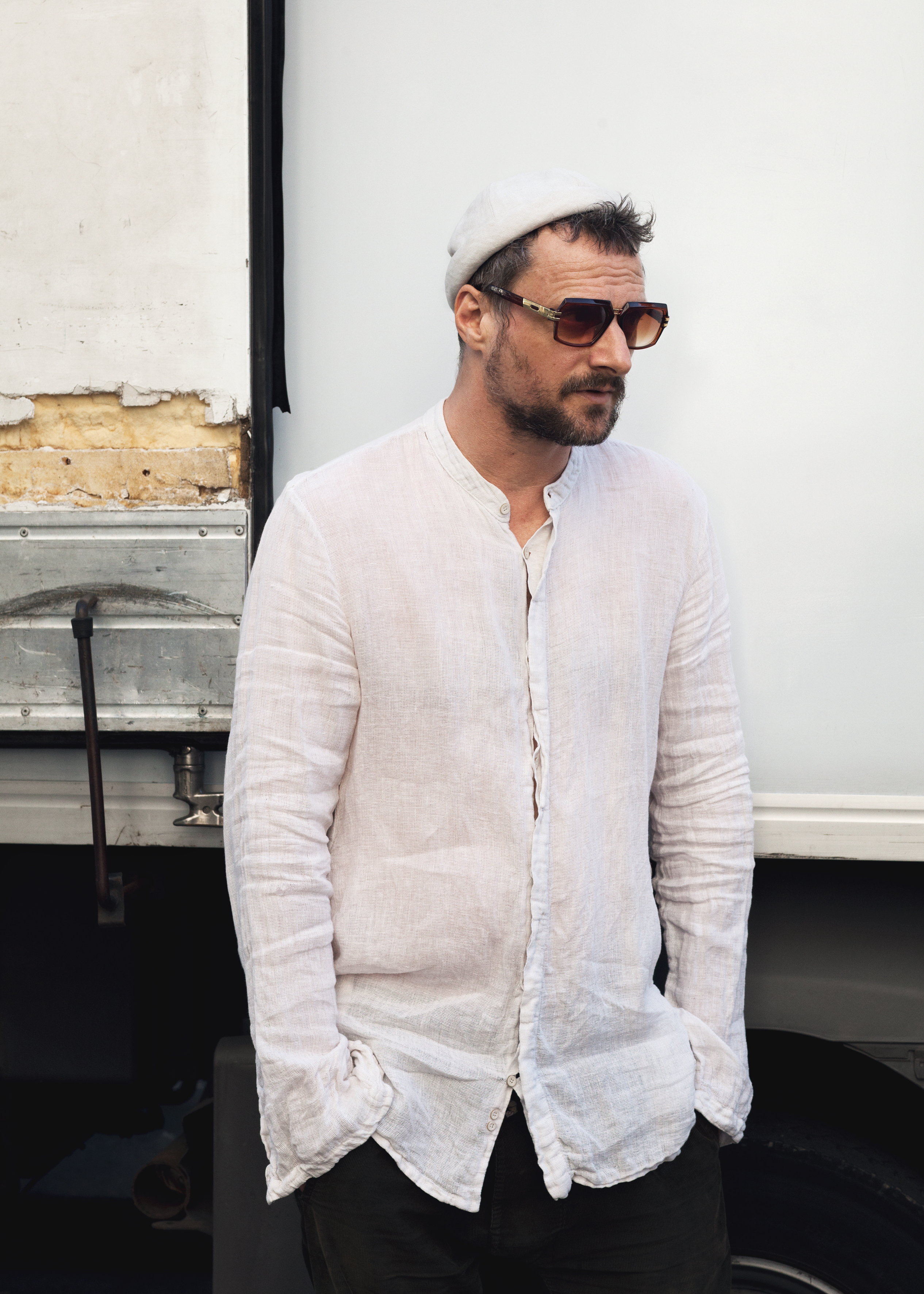
Koze’s own musical experiments started around the age of 14. He began watching scratch DJs like DJ Qbert and Aladdin from Low Profile, and then experiencing his first DMC championships inspired imitation. “We bought the same records and we tried just to do it the same,” he continues. He finished runner-up in his first DMC DJ Championships in 1988, aged just 16. In parallel with this, though pursued with much less fervor, he was also making his own sounds. One guy, a local car painter who lived with his mother, owned an eight-track tape player and Koze sometimes visited him to play with it. He’d sample beat breaks from records and merge them into loops—known as multi-track recording. “To make a four-minute beat would take a whole afternoon and then I’d come the next day and add something more,” he explains. “This is where I come from.” He takes a sip of beer, and protests that he’s given enough “gold.” “I feel old now,” he adds, before sitting back, smiling, and inviting another question.
After finishing school and completing two years of social work, Koze relocated to Hamburg, aged 20, intent on “escaping the depression” of Flensburg. He opted against university because nothing appealed to him in terms of a “proper education.” Music was also proving exciting. He soon reconnected with Sven Mikolajewicz, Daniel Sommer (a.k.a Cosmic DJ), and Rafael Stachowia, former members of a rival Flensberg hip-hop crew. Putting their pasts to one side, they united to create Fischmob. Mikolajewicz had a sampler and they began experimenting with sounds, looking to combine punk and guitar with hip-hop. Much of the appeal of these aesthetics stemmed from the fact that none of the crew had any musical training: “Everyone can do hip-hop,” Koze explains, “because all you need are some ideas and a sampler.” They spent their days walking around the city with a recorder, posing random questions (e.g “How do you like the weather?” ) and then recontextualizing these responses (e.g “I like it”) by attaching them to a different question (e.g “How do you like Fischmob”). This brought a much-welcomed humor and light-heartedness to a hip-hop world so notoriously straight-laced and serious.
Their first tape arrived in 1994, titled “Ey, Aller,” and was quickly picked up by Plattenmeister, a small independent label in Lübeck, Germany. Having signed a record deal, they were pushed back into the studio to begin work on a debut album, which arrived less than a year later, titled Männer Können Seine Gefühle Nicht Zeigen. Sales exceeded 50,000 without any promotion or media support, a tremendous achievement even today. It was the first baby steps of a new German hip-hop movement.
The band supported the album with a European tour where they performed a choreographed show featuring rap, drumming, guitar, scratching—and some tongue-in-cheek, often grotesque humor. “It was a real performance,” Koze recalls, “so much more than just a music concert.” Further EPs and singles followed and soon, having impressed Die Ärzte with their music, Koze and the gang were invited to join the famous German punk-rock band on tour. Their stage time was limited to 20 minutes during which they embraced the spotlight—drinking, partying, and just having as much fun as possible. “They [Die Ärzte] said that they had never seen a band as self-destructive as us,” Koze recalls, laughing. “But we were in our 20s and just happy-go-lucky,” he continues. “Why should I go on stage without a Bacardi Cola?”
1998’s follow up album marked the beginning of the end for Fischmob. Success and signing with a major label brought with it expectations and an unwelcome pressure. The German hip-hop scene had also exploded, placing the band at the epicenter of a mainstream musical movement. “We were real pioneers,” Koze explains, “and now the whole country was paying attention to us.” Koze also harbored a dislike for how the hip-hop scene had become so competitive and male-dominated. “It was just full of young males and I think I grew beyond this,” he explains. But the most challenging part was retaining the naivety and innocence that had for so long been at the band’s core; they needed to make music to sell if they were to recoup the significant costs of an album campaign. “We had become aware of the reasons for our success and so we tried to stick to certain rules,” Koze explains. “We no longer felt that we had the freedom to do whatever we wanted.” This also grated on him personally given his need to break the rules and “fuck things up.” The group dissolved in 1998, shortly after the album’s release.
Koze’s Adolf Noise project was born out of these frustrations. It was also an outlet to satisfy his craving for radical music—music, he says, that “irritates” you. “When we were meeting, drinking, and smoking, we were always interested in being irritated,” he says. “I wanted music that you couldn’t understand—where you have no idea what the fuck is going on. Why is the beat changing every 10 seconds? Is it trying to ironic?” He reveals an appreciation for Deep Purple, KLF, Lee “Scratch” Perry, and Frank Zappa; it was the work of these artists that set the project’s ill-defined sonic template, “The purpose [of Adolf Noise] was humor and irritation,” Koze says. “I wanted the music to be completely non-functional except that it had to be irritating,” he continues.
A debut release, EP 1: Wunden, S. Beine Offen, came in 1996, and its production brought Koze much satisfaction. He made the record with no consideration for sales, and he revelled in this freedom. “I realized that sounds can be completely free and that I don’t have to make compromises with my work,” he says. At 45 minutes in length, the release is a bizarre tapestry of obscure field recordings, many taken from television and radio programs, some of which are musical and others only verbal—like a psychedelic radio broadcast. It’s also a direct manifestation of Koze’s rebellious nature. “Everyone at the time wanted to have a proper contract so they felt obliged to do proper music,” he says. “They never felt free enough to fuck it up,” he continues. “But we were all trying to go more extreme; in fact, we celebrated this!”
This proved a formative moment in Koze’s career. Freed from the shackles of market expectation, he had defined his love for out-there, abstract music—and there was no going back. “I think at this point I lost all interested in making the right music,” he explains. “My income was coming from hip-hop but my heart had moved on to music that has no rules or boundaries,” he continues. “Hip-hop started to feel like work because there were certain formulas to follow—but I wanted a white page to do what the fuck I wanted.”
Koze’s International Pony project followed a similar trajectory to Fischmob. Upon the latter’s dissolution, Koze and Cosmic formed International Pony in 1998 with Carsten Meyer (a.k.a Erobique), a multi-instrumentalist who had been supporting Fischmob on tour. With Mikolajewicz absent through sickness before a Berlin Fischmob show, Koze, Cosmic, and Meyer spent a week experimenting in the hotel’s conference room, giving rise to three new tracks with a funk and electro aesthetic. They pressed this to vinyl that same week, and continued making music for the best part of a decade. “We wanted to continue with this shit because it came so naturally,” Koze explains. But once again, success came with a price: “[After the second album] It became too professional,” Koze explains, stressing once again a deep-rooted aversion for expectations. Interest from major labels was high, even more so given that it had grown out of Fischmob. The music was also commercially viable, so much so that Fatboy Slim’s Skin label licensed some tracks. Yet as pressure grew, Koze’s focus waned.
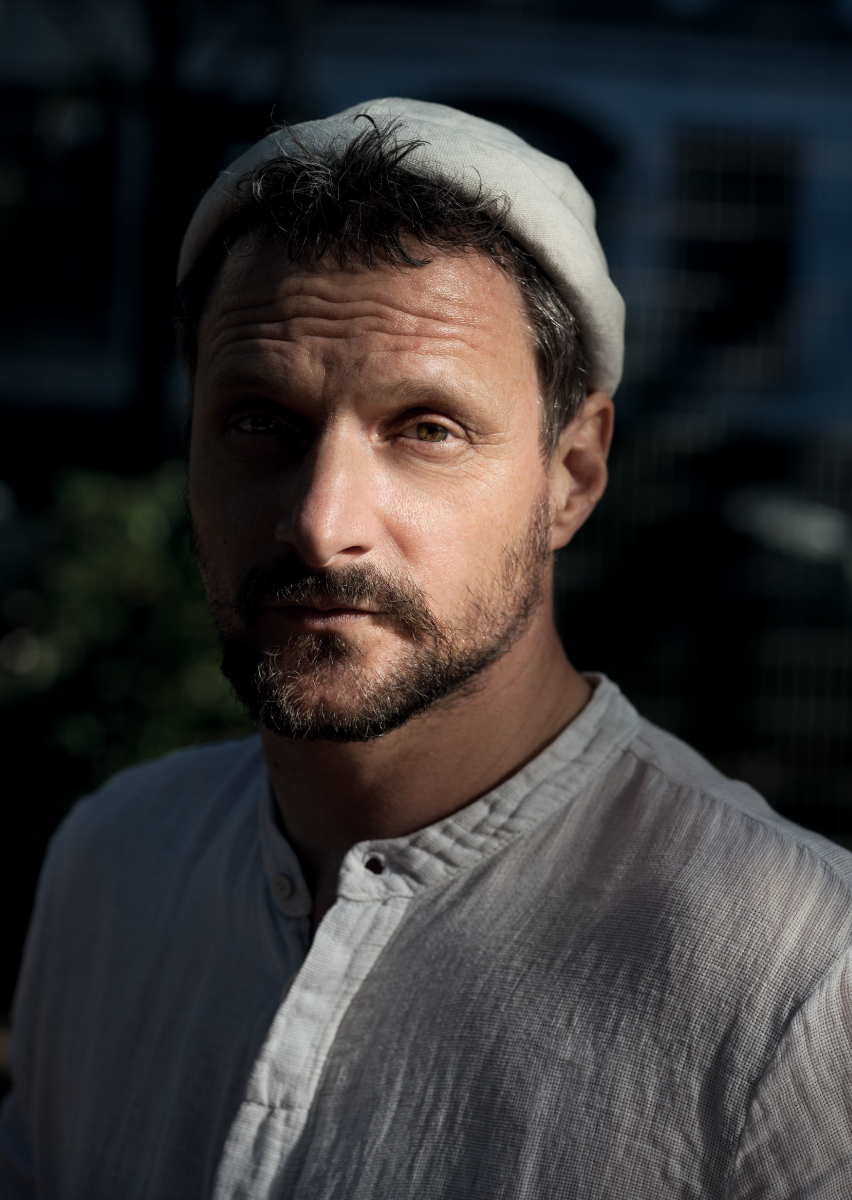
By the early noughties, techno and house were on Koze’s radar. His gateway to these realms had been acid music; its brutality had fascinated him ever since he’d discovered it in Flensburg. “It really had the potential to screw with your brain,” he explains. But it had taken some time for him to appreciate these new sounds: “At first I couldn’t feel it because it was so abstract, but we had to understand it if we wanted to be cool,” Koze recalls. “It’s not easy for the countryside youth to comprehend such advanced music.” With some effort, an appreciation grew, and this bled into other strains of techno and house—though much of the former, he explains, has always felt too cold and monotonous; while the latter often feels generic and uninteresting.
Nonetheless, his success with Fischmob had led him to become a prominent figure on the European DJ circuit. Being surrounded by club-formatted house and techno sounds had influenced his work with International Pony, but it wasn’t until Kompakt came calling that he began zoning in on these aesthetics.
His relationship with the Cologne-based label stemmed partly from a late 1990s DJ set at Studio 672. In his bag that night were Steve Bug’s “Loverboy,” a cold techno track, and “Tausend Tränen Tief,” a pop ballad by Blumfeld, one of the most credible German acts of the period. With no prior intention, he mixed the two and the room “just exploded,” Koze recalls.“It sounded like Mickey Mouse with a techno beat” Blumfeld soon caught wind of Koze’s creation and asked him to record the mashup. The subsequent 12” became a widespread success, and Kompakt later reached out to invite Koze to put out a 12” on the label.
But this threw up a challenge of its own. Like many German labels during this period, Kompakt was a purveyor of stripped-back, minimal sounds and Koze had little experience in producing such. He was an accomplished producer, and the essence of minimal music fascinated him—notably “the idea that you can create big feelings with only a small amount of sounds,” he explains—but he recognized the difficulty in making something to fit with the label. Nonetheless, “flattered” by the request, he set about “following the formula” while trying to give it his own psychedelic spin. “If I am interested in something then I will work hard to understand it,” he says. “I will play around to make the sounds I want.” In 2003 came The Geklöppel Continues, followed by 2004’s Late Check Out, and then his 2005 debut album Kosi Comes Around. His appearances on Kompakt Extra, “Der Jäger Von St. Georg” and the classic “Brutalga Square,” were particularly brilliant.
And this is an example of one of Koze’s most defining attributes: the ability to apply his singular artistic brush to such a range of disparate styles. Listen through his discography, from Adolf Noise through DJ Koze, and there’s something intrinsically Koze about it all—a refined but colorful inventiveness despite a vast aesthetic diversity. “I am really happy that I don’t produce in the musical black hole,” he explains, “because that must be the most depressing thing for an artist.” He explains that his “deepest interest” is finding music that he hasn’t yet heard, and that he puts a lot of pressure on himself to make music that’s different, even if its founded upon something that’s already out there. “I am never trying to make music that you already know; there must always be a twist,” he explains. He believes that the foundations of his success lie herein. “I think a lot of people are motivated by success rather than being original and genuine,” he explains, “but if you’re thinking about the charts then God leaves the studio.”
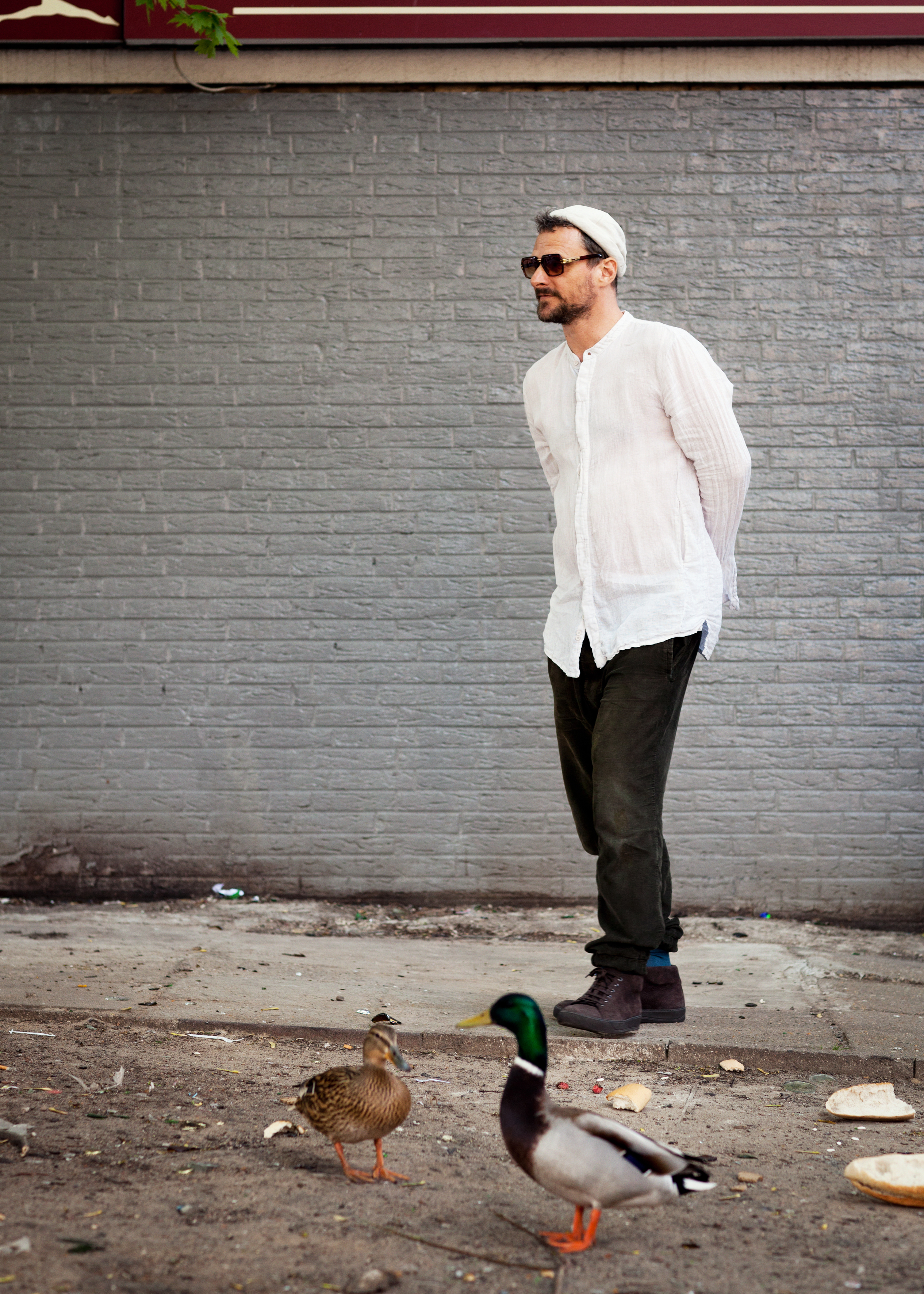
Despite his lighthearted, care-free image, there’s no denying that Koze takes his music extremely seriously. He’s a thinker, an intelligent and inquisitive artist who thinks deeply about how best to develop his expression. His avoidance of social media, light touring schedule, and aversion to the electronic music scene are all choices aimed at harnessing this artistic voice. But Koze, too, is rebellious and wonderfully eccentric, as shown by his press photos (one shows him sitting on a toilet), bizarre track titles, and outlandish album art. It comes across as a “fuck you” but it’s really just an outlet for this mischievous young boy from Flensburg. Though serious at times, he’s also funny, possessive of a humor so dry that it can be difficult to determine sincerity. During a visit to my Airbnb apartment, he switches between these two states—one second analyzing why so many people settle in dead-end jobs before suggesting that we paint the apartment walls a slightly lighter shade of grey to make the owner think she’s losing her mind. It’s in these moments that you begin to understand why his music sounds as colorful as it does.
Important, too, he believes, is his lack of musical training. He explains that he’s an autodidact; his musical endeavors are entirely self-taught, and stresses the importance of this in forging an individual identity in an oversaturated scene. He reveals an appreciation for “non-music musicians, like punk rockers” in that their energy came because they couldn’t actually play instruments. “They would just experiment and make something that sounds good, oblivious to rules,” he adds. “For me, this wins every time against a jazz musician who studied his whole childhood.” Koze believes that observance of rules actually inhibits originality. “I am never interested in good musicians; I only like good musicians if they use their skills to do something less perfect,” he says. “By sticking to rules you’re only going to sound like those who wrote them.”
Instead, he values “interesting” ideas. “You have to have your own taste, that’s the most important thing, because you can tweak things to make them sound as you want,” he explains. “You have to determine what you like and what moves you,” he continues. “Once you have that then you have to work out how to make music that gives you a similar intensity of feelings.” Naturally, he agrees that being more “musically talented” would assist in translating these ideas into musical form, but that “you cannot make gold out of shit.” However, “if the idea is good then it can move you even if the production is shit.”
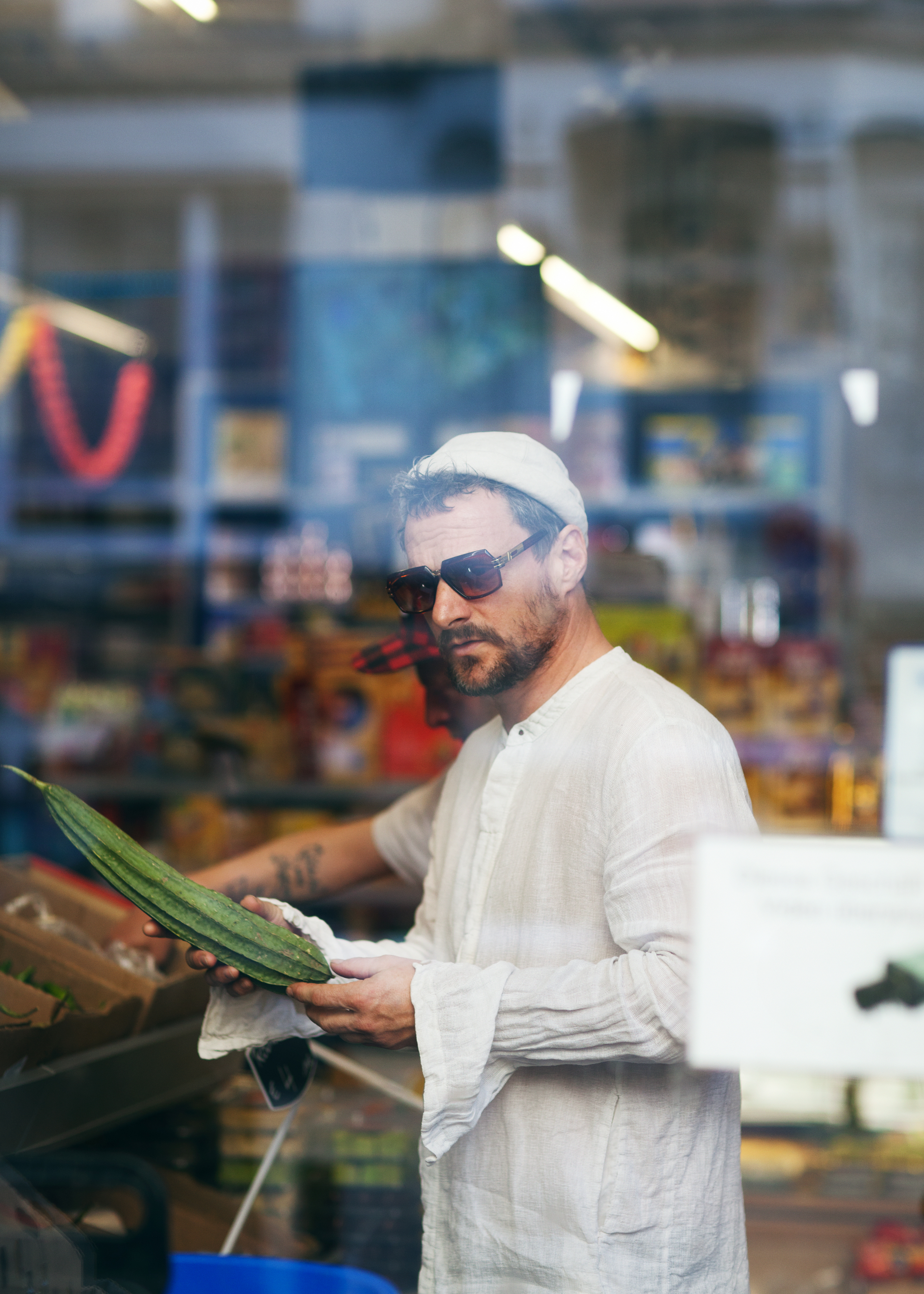
Koze’s ideas began to shift once again towards the end of the noughties. A string of standout left-field, psychedelic minimal tracks appeared, including 2008’s “I Want To Sleep,” before Koze’s work became softer, brighter, and even more colorful. Shimmering pop and sample-heavy hazy electronica usurped the stripped-back dancefloor cuts, as if Koze had taken off the handbrake. In 2009 came Reincarnations, a tremendous remix compilation, before he started the Pampa label with Marcus Fink. It was here that he released his wonderfully weird 2013 Amygdala long-player that delicately blended techno, house, and pop in a classy way that only Koze can. He offers one explanation for this transformation: “I started licking frogs and couldn’t stand techno anymore,” though it’s again not clear how serious he is being. Adopting a more serious tone, he also stresses there’s more to music than techno, and that formatting his music for clubs was limiting the emotions he was able to purvey. And so he moved on with his musical explorations, as he had done many times before.
It would appear that Koze’s evolution was also partly inspired by a personal transformation. Koze’s Kompakt releases did much to raise his profile, situating him in the midst of a vibrant house and techno scene from which he began to feel increasingly estranged. He makes no secret of his prior indulgence in the DJ lifestyle but explains that it soon became clear that he was not cut out for life as a touring artist. “I wanted to make a living from my music but being on stage and presenting myself is not a deep wish for me,” he says. “If somebody came to me and said you can earn the same money, get the same feedback, and spread the same music without going on stage, then I would do it.” He alludes to struggles with anxieties but says that he’s worked hard to maintain a life balance by prioritizing space and solitude. He limits his time on the road to only a handful of times a month. “If you take care of the engine it will last longer”, he says.
And this seclusion from the scene at large is central to Koze’s entire process. Living in a city with lots going on would pollute his mind and dampen his brilliance. He divides his time between Hamburg, where he lives in an apartment across the road from his girlfriend, and their shared home in a remote village a distance outside of Barcelona—where he recorded a healthy chunk of Knock Knock. He avoids places like Berlin, homes of vibrant underground music scenes, because they make it harder for him to listen to his own singular artistic instincts. “I see no gain from being inside the music scene,” he says. “The human brain works like this: you hear all these other people doing these other things and then you begin to lose yourself,” he adds. “You never win if you compare yourself to others.” His avoidance of social media is founded on similar grounds.
Solitude also means fewer distractions. His inspiration to make music, he explains, is based on boredom; only when he has nothing to do can he produce anything of meaning. “If everything calms down I am not trying to solve any problems then his feeling will grow in me,” he says, adding that he’ll sometimes be away from the studio for so long that he actually forgets how the machines work. His studio time has been severely limited of late because the “noise” of the album campaign has occupied him. He last produced anything of note in March when he and his girlfriend ventured to their home in Spain. “Once I have space to breathe again then it [this feeling] will return, I hope,” he says.
But even then there is no determining the outcome. “I cannot rely on myself to make something interesting,” Koze explains. “I still believe it’s complete luck when I make music; it’s like a miracle.” The primary reason for reducing his touring schedule has been to allow him the necessary time to work on new music—to be in the studio, ready for when the ideas do present themselves. “I can sit in the studio for weeks and there will be nothing I want to save,” he says. “I have to be in there waiting though. Because the muse never visits an empty studio.” He likens it to being in a desert waiting for the rain to come. “This is because I am not a good musician,” he explains. “Good musicians can just play but I am always depending on good ideas.” It is for this reason that Knock Knock took him more than four years to produce.
There’s no doubting that Koze is in a good place artistically. Writing music, an estranged electronic pop in which so many indulge, is an endeavor from which he draws much enjoyment. He’s a free-spirited and innately gifted musical mind who shuns expectation, opting for authenticity and originality above all else. He explains that he feels fortunate to make a living doing what he enjoys without compromise: “I am happy to have a life,” he confesses, but you feel this whole campaign has required him to take an unwelcome break from it.
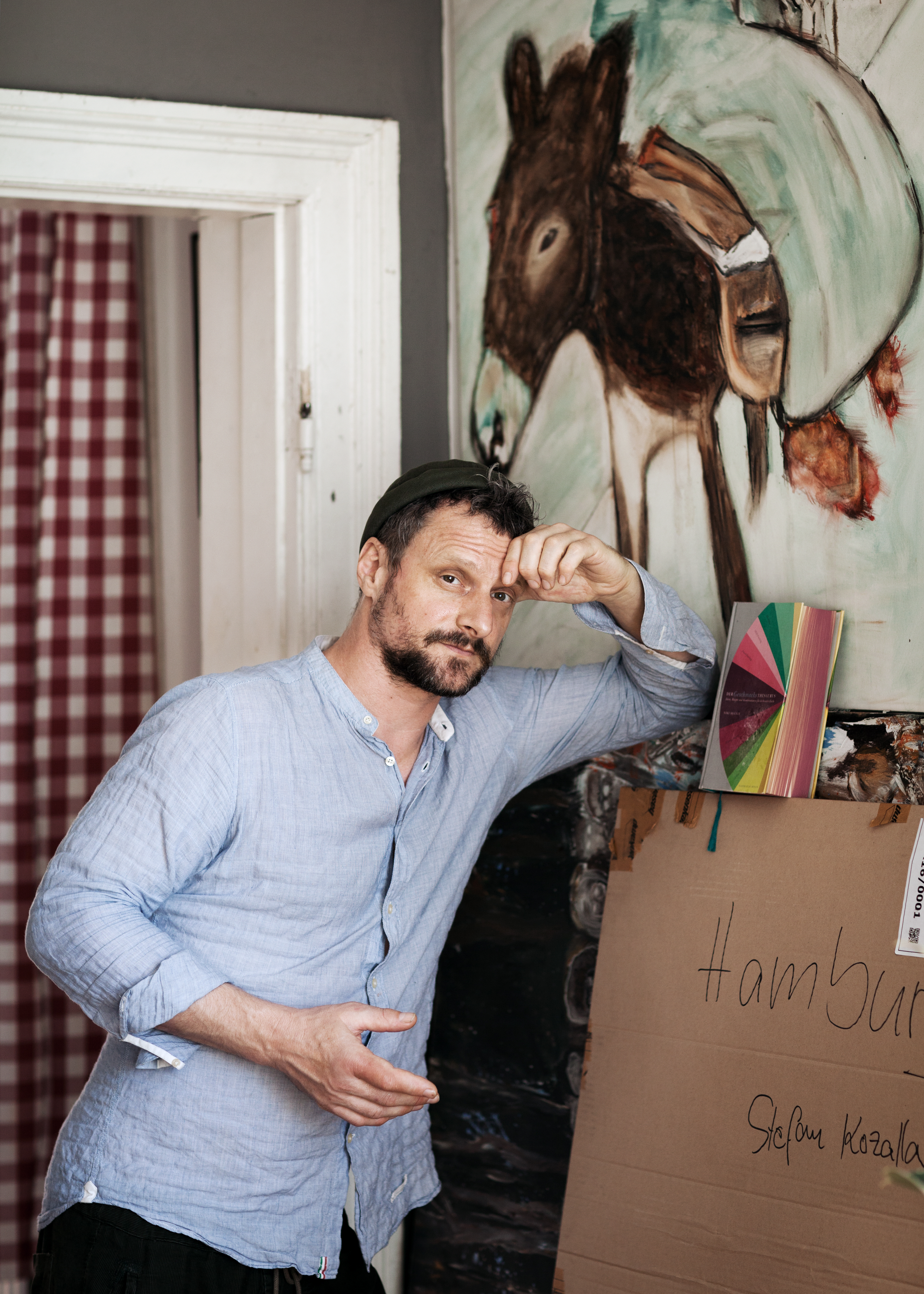
But, like any human, especially those who dare color outside the lines, he’s far from immune to the reception of his work. On several occasions he indicates how nervous he is about the release, explaining that he has to constantly remind himself that “there is an option to fail,” and he seems touched when I remind him of the album’s quality. “Thank you,” he says, as if he really needed the support.
Later that week, when “Pick Up” was named “Hottest Records in the World” by the BBC, I sent him a message with the link: “Well done—underground integrity and commercial appeal: it’s not easy to keep a foot in both.”
His response, quoting his recent DJ Mag cover: “Yes, only “maverick geniuses” can combine!”
All photos: Simone Scardovelli

